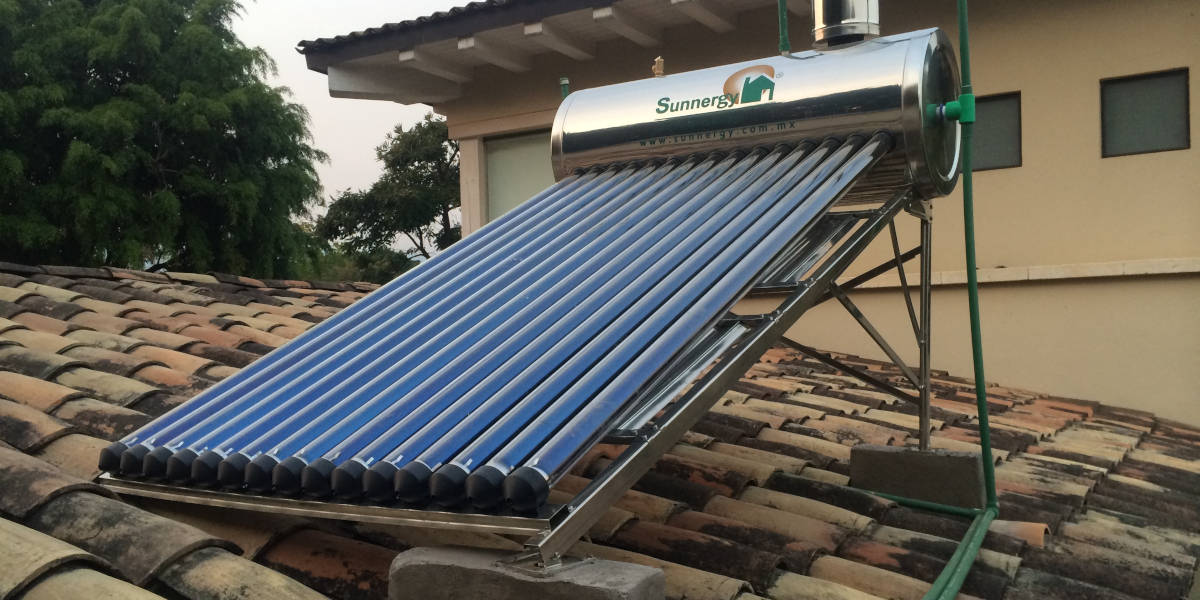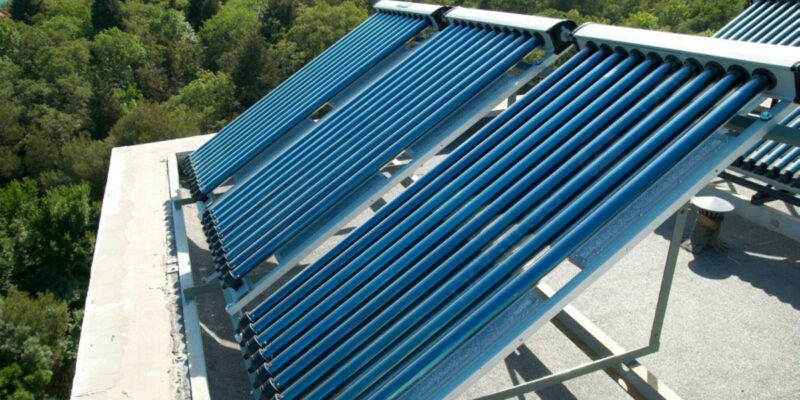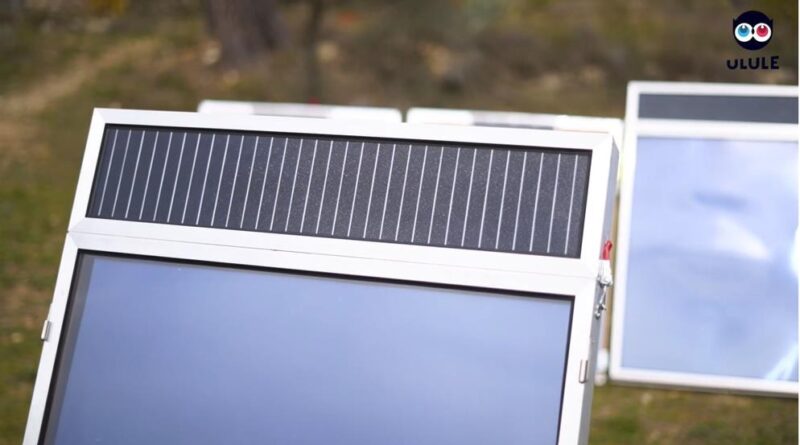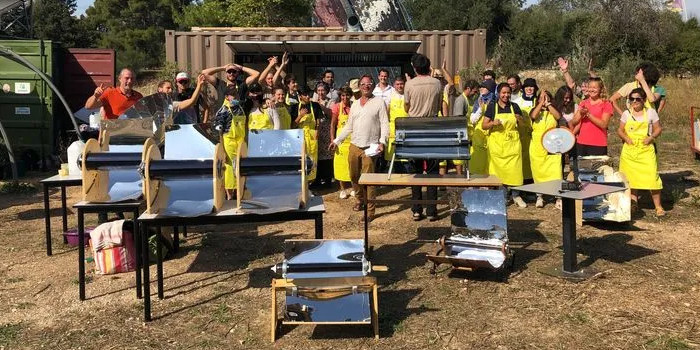News
A solar water heater for free energy recovery
Solar water heaters, the most efficient way to recover solar energy
Solar water heaters are an economical way to produce hot water for your home. They can be used in any climate, and the fuel they use – the sun – is free, renewable and clean! The solar water heater can be combined with a back-up water heater (electric, gas or wood) to meet the family’s hot water needs all year round. In summer, solar water heaters can cover 100% of your needs, and this environmentally-friendly solution saves you an average of 60% energy every year.
How does a solar water heater work?
How a solar thermal water heater works
A solar thermal water heating system consists of roof-mounted solar collectors to heat water (or a liquid heat transfer medium with a heat exchanger) and tanks to store the hot water. A distinction is made here between passive systems, which operate without a pump, and active systems, with a pump.
How a hybrid solar water heater works
The collectors of a hybrid solar water heater have the special feature of producing electricity and hot water at the same time. From the front, these are classic photovoltaic solar panels that convert light directly into electricity. On the other hand, the back of the panel acts as a thermal collector in which a heat-transfer liquid circulates: this technique has the dual advantage of cooling the photovoltaic panels and thus increasing their yield, while at the same time producing hot water.
How photovoltaic solar water heaters work
This solution uses photovoltaic solar panels connected directly to the electric hot water tank via a controller. This system fits most existing electric balloons. This solar electric heating solution has become inexpensive, easy to install and requires very little maintenance.
The different types of solar thermal water heaters
Solar thermal water heaters are the most common type, and come in a wide range of configurations. Solar water heaters require a well-insulated storage tank with an additional outlet and inlet connected to the solar collectors. In two-tank systems, the solar water heater preheats the water before it enters the conventional water heater. In single-tank systems, the auxiliary heating is combined with the solar storage tank in a single tank.
Monobloc
In the case of a monobloc solar water heater, the tank and solar collectors are located outdoors, and the storage tank is mounted directly above the collectors. This is a passive system, as the water circulates naturally: heated by the collectors, it flows back up to the solar storage tank. As the storage tank is installed on the roof, heat loss and the risk of frost are significant in winter. This system is therefore well-suited to warmer regions, where it is most widespread, not least because of its ease of installation.
Thermosiphon
The thermosiphon water heater works on the same principle as the monobloc, the only difference being that the hot water tank is separate. This configuration allows the storage tank to be installed in the attic instead of outside on the roof. As this is a passive system, the storage tank must always be positioned above the collectors to ensure natural circulation of hot water to the storage tank.
Self-draining
This version of the solar water heater is specially adapted for cold regions. In fact, if the sun doesn’t heat the circuit sufficiently, it drains automatically to prevent problems caused by frost. This system must be coupled with auxiliary heating, as solar heating will remain inactive during cold spells.
Forced circulation
This system is the most common in Europe, as it is easier to install in the home and works well in temperate regions. As the name suggests, this is an active system with a pump circulating the heat transfer fluid throughout the circuit. The hot water cylinder can therefore be installed in any part of the house in relation to the solar collectors. What’s more, the heat transfer fluid incorporates antifreeze to protect the circuit from winter temperatures. The forced-circulation solar water heater is well suited to all seasons.
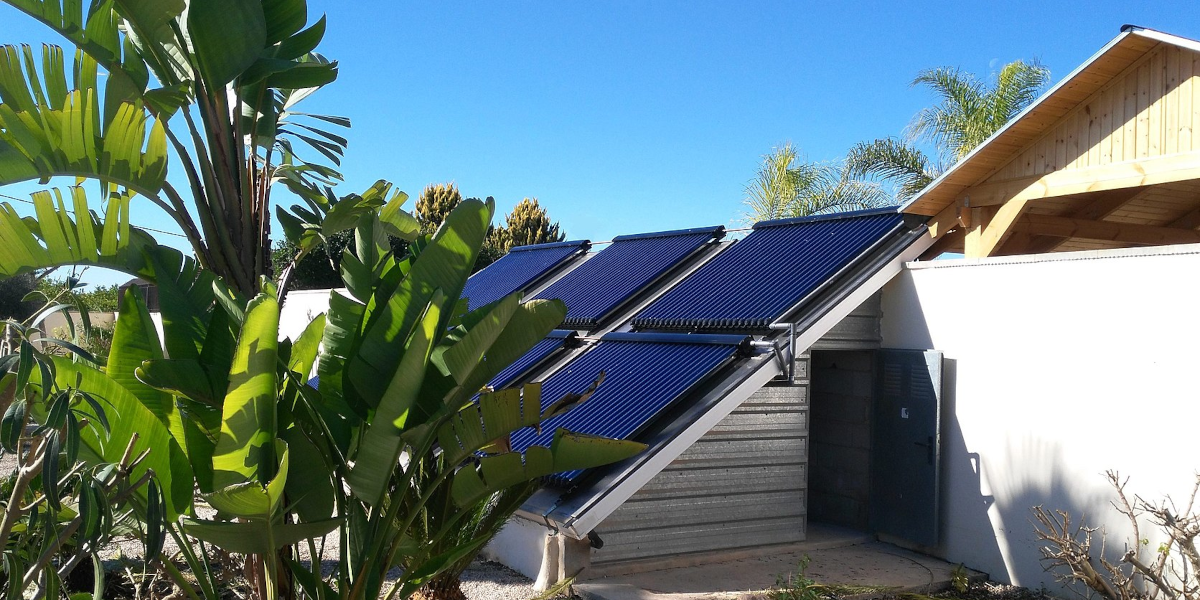
Solar water heater installation
The first and most important step is to correctly size your system in accordance with current standards. Installation is then very quick, and you should be aware that there are many grants available to help finance it. At every stage, it’s advisable to call on professionals, including for maintenance, to optimize and ensure the longevity of your system.
Right-sizing your system
The surface area and location of the collectors is mainly defined by :
– Number of occupants
– Geographical location (cold, temperate or hot climate)
– Your roof’s exposure to the sun (orientation and slope).
With a solar water heater, you can consider producing only domestic hot water or also heating your home. In the latter case, the combined solar system will be connected to several circuits to produce hot water and supply water radiators and/or underfloor heating.
Quick installation and easy maintenance
If you call in a professional, most solar hot water systems can be installed in a day or two. After installation, passive systems require little maintenance. For active systems, check with your supplier or installer. The plumbing and other components of a solar thermal water heater require the same maintenance as a conventional system. In dry climates where rainwater is scarce, it is often necessary to remove dust from the collectors.
A profitable and sustainable investment
The lifespan of a solar water heater is very long: allow at least 10 years before replacing certain components, and up to 30 years for solar collectors. The cost of an installation for a 4-person household is between 4,000 and 8,000 EUR, depending on the configuration, including installation; the return on investment is between 5 and 10 years. Like all individual solar systems, after the initial investment, the cost of your energy is fixed and known in advance. What’s more, financial aid is available in most European countries to finance the installation of environmentally-friendly heating systems.
In conclusion
Solar water heating systems are a long-established technology that has already proved its worth all over the world and in all climates. The need for ecological transition has rekindled the interest in producing decarbonized energy. For every household, the advantage is greater autonomy and big savings on energy bills. Solar heating has a bright future!

